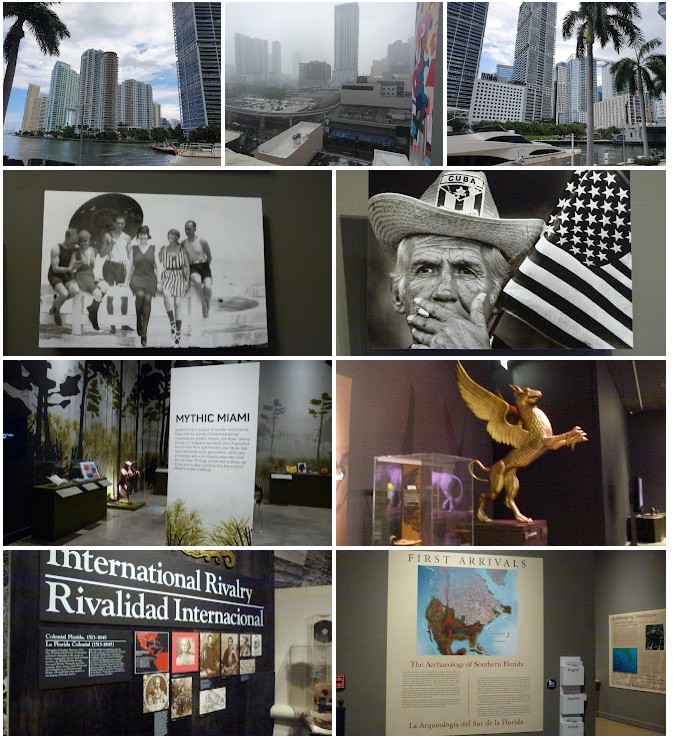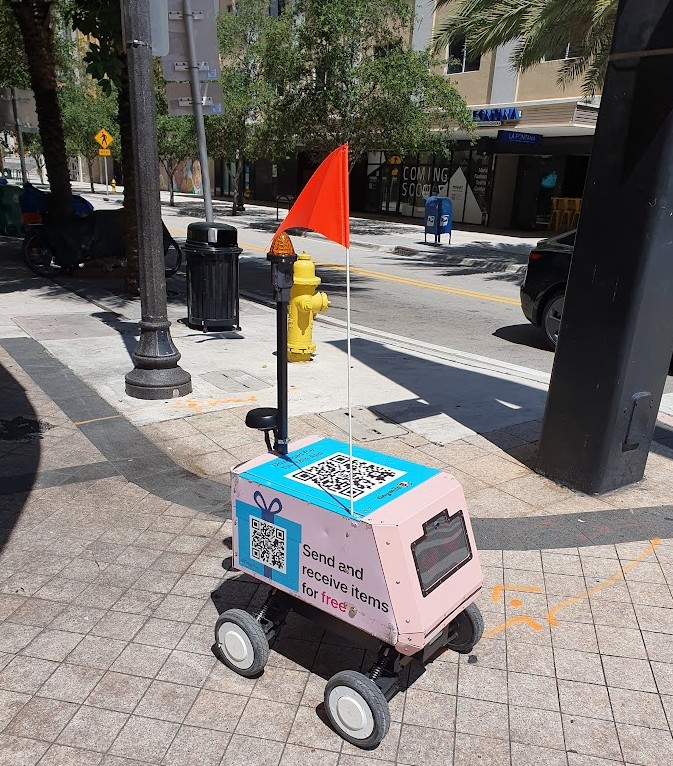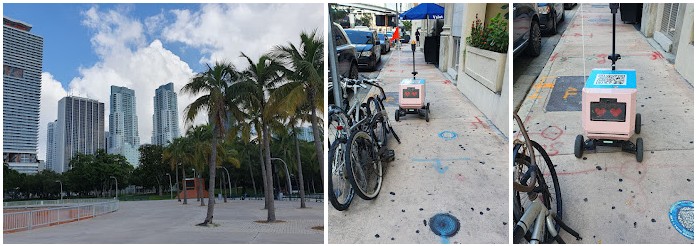When at home, each morning, unless it's raining heavily, I walk down to our local beach and back. And, in a normal year, that is usually quite sufficient time at a beach for me.
 Panorama of Edwards Beach, Balmoral - our local
Panorama of Edwards Beach, Balmoral - our local
There are not a lot of beaches to rival it - and they are mostly close at hand - not on the other side of the planet
I don't sunbake and don't find beaches relaxing. So when travelling overseas visiting a beach is usually well down my list of things to do.
I'd been to Miami, in the late 1970's, a sort of: 'Queensland Gold Coast on steroids' (or perhaps Xanax) and it was not my idea of a good place to spend much, very expensive, travel time.
But as we were going to be in Fort Lauderdale to board a Caribbean Cruise, it seemed a good opportunity to see what's changed in the past half century.
And quite a bit has.
In Miami city new high rise apartments have sprung up near the water and there is now a very elaborate elevated tram (Metromover) and train (Metrorail) system that, in addition to providing airconditioned transport, has the benefit of providing some shade and shelter from frequent downpours, in what is generally an unpleasantly hot and humid climate. When it rains in Miami it pours but at least it's cooler.
Looking for something of interest, aside from creative architecture among the new residential skyscrapers, I discovered the 'HistoryMiami' Museum, the largest history museum in the State of Florida (not a huge challenge). The history museum in Miami isn't vast, like the one in Toronto, but it has its moments.
It's housed in what was once an industrial building and is part of a downtown revival plan, adjacent to an elevated train/tram station. I found it very interesting. As the on-line description says it: "covers 12,000 years of history and examines the development of the region and its people against key historic events, including early Native American settlement, the Spanish Exploration period, and World War II up to the present."

Here we learn of the first human migration into the Americas, from central Asia during the last great glaciation, when sea levels were very low. We learn of the plight of the first humans to settle in Florida and more recently of the struggle between various European powers to control the region and, in some cases to win souls - the hearts and minds, of the people.
First the French, English, and Spanish forced native people off their traditional lands into this then remote water-logged jungle to do their bidding. Then, when it became US territory, they were rounded up and forcibly relocated, along with other native tribes, west of the Mississippi.
But not everyone got caught, so some, remained and found ways to make a living.
Florida joined the Confederacy in its attempt at independence. As a consequence, it suffered 'reconstruction' after the Civil War, when 'carpet baggers' from the north took over. Then came the wars with various Spanish interests. Including Cuba and Hispaniola.
In modern times Cuba has had a great deal of influence here as many people are from Cuba or have Cuban ancestors.
In 1959 many working-class Cuban people and some intellectuals supported Fidel Castro's Communist revolution against the corrupt Batista regime that, with the help of the American Gangster Meyer Lansky, had turned the one-time democracy into a gambling, drugs and prostitution playground.
As a result, the wealthy, much of the middle-class and not a few crooks, fled to Florida, vowing to return to set things right. Thus changing US politics forever.
 Click on the picture above for what we learned Cuba
Click on the picture above for what we learned Cuba
It's worth noting, that partly as a result of these events and historical accidents, we've come from one largely non-English speaking city (Montreal) to another. Many people here have Spanish only. Others, mainly the decedents of slaves, speak Creole (a version of French) among themselves.
***
Walking back from the museum in Miami that day, something was rattling along behind me. Perhaps someone pushing a shopping cart? I looked around. Nobody!
I looked down. It was this little guy. He stopped at the crossing with me.

There was no traffic so I crossed. I left him standing there - obediently - at the red light.
A day later I was returning to our hotel, several kilometres away, in a different part of town. and there, coming to meet me, was 'he, she or they' again!
I think 'they' must be stalking me! They blinked harts at me!
